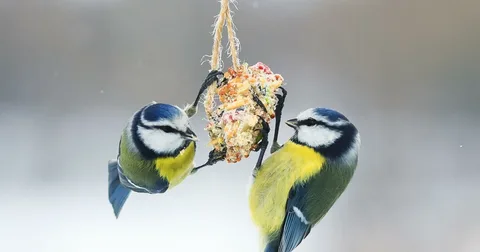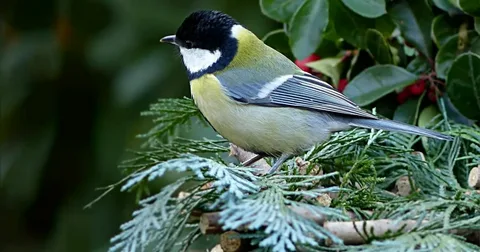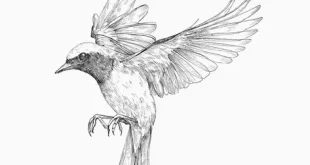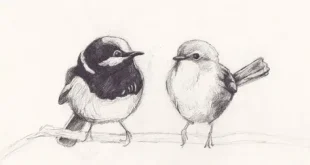Why Tit Bird Important for Nature Ecosystems in the USA
1. Introduction to These Charming Garden Visitors

Tit Bird Among the most delightful and lively small birds found across the United States are tit birds. Their cheerful energy, colorful feathers, and playful personalities make them favorites among American bird watchers. These birds belong to the Paridae family and are admired for their adaptability and intelligence. In the USA, they are frequently seen flitting through gardens, parks, and forest edges. Their active behavior, quick movements, and social calls make them fun to watch throughout the year. They are bold, curious, and often come close to feeders, unafraid of human presence. Their constant activity adds life to every corner of nature. These birds are not only beautiful but also essential for maintaining ecological balance, helping to control insects and spread seeds across many environments in the United States.
2. Different Species Commonly Found Across the USA

Tit Bird In the United States, there are several well-known species of these charming birds that inhabit different regions. The most recognized include the Black-capped Chickadee, Carolina Chickadee, Mountain Chickadee, and the Tufted Titmouse. Each species has distinctive markings, from black caps and white cheeks to soft gray or brown feathers. These birds thrive in forests, suburban neighborhoods, and rural gardens, showing impressive adaptability to America’s changing seasons. Most species remain in their territories year-round, surviving even harsh winters with their excellent memory and food-storing behavior. Their ability to coexist with humans has made them a familiar sight at backyard feeders across the USA. For bird lovers, identifying different species provides a rewarding experience, as each brings a unique sound, appearance, and character to America’s vibrant bird population.
3. Tit Bird Feeding Habits and Diet of These Lively Birds
The feeding habits of these small American songbirds reflect their intelligence and flexibility. During the warmer months, they feast on insects such as caterpillars, beetles, and spiders, providing natural pest control in gardens and woodlands. In the colder seasons, their diet shifts to seeds, nuts, and berries, helping them survive when insects are scarce. People across the USA attract them with sunflower seeds, suet, or crushed peanuts placed in small feeders. Their acrobatic style of hanging upside down while feeding shows their remarkable agility. They also hide food during autumn, storing it in bark or crevices for winter. This caching behavior demonstrates advanced memory and problem-solving skills. By adjusting their diet to match local conditions, these birds thrive in every state of the country, from snowy regions to warm southern forests.
4. Tit Bird Nesting Behavior and Raising Young in the USA

The nesting behavior of these birds is fascinating and displays their strong family instincts. Across the United States, they typically nest in tree cavities, wooden posts, or specially designed birdhouses. The female constructs a cozy nest from moss, grass, and feathers, while the male guards the territory. During the spring, they lay five to ten small, white eggs with brown speckles. The female incubates the eggs while the male provides food. After hatching, both parents work tirelessly to feed their chicks a diet rich in insects. The young birds usually leave the nest within three weeks, but parents continue to care for them nearby. Gardeners in the USA can help by providing safe nesting boxes and native plants, which offer both food and protection. Their nurturing nature makes them one of America’s most admired backyard birds.
5. Importance of Conservation and Creating Safe Habitats in the USA
Although these birds remain common in many American regions, protecting their natural habitats is still important. Urbanization and the removal of old trees reduce suitable nesting spaces. Homeowners across the USA can help by planting native trees and shrubs that provide berries, insects, and shelter. Avoiding pesticides is also crucial, as it ensures safe food sources for birds and their chicks. Installing small birdhouses helps cavity nesters find secure breeding spots in cities and suburbs. Local wildlife organizations in the United States encourage people to join bird monitoring programs, which track populations and promote conservation. These simple efforts not only protect tit birds but also benefit many other species sharing the same ecosystem. When people help create bird-friendly spaces, they strengthen the bond between communities and the nature surrounding them.
6. Observing and Enjoying Their Playful Nature in the USA Tit Bird
Across the United States, watching these lively birds is one of the most enjoyable outdoor activities. They are bold, curious, and frequently visit backyard feeders, even when people are nearby. Their cheerful songs fill the air in early mornings, bringing life and color to gardens and parks. Bird watchers often observe how they communicate through chirps, quick wing movements, and head tilts. Setting up feeders with fresh water, seeds, and suet attracts them throughout the year. Their social behavior allows them to interact with other species peacefully. Whether in a suburban backyard or a mountain forest, their playful energy never fails to impress. Observing them teaches patience, appreciation, and respect for nature’s simple wonders. For many Americans, these birds symbolize the joy and harmony found in everyday connections with wildlife.
What Makes the Tit Bird Special
The Tit bird, known as the chickadee in the USA, is one of the most charming and active songbirds. With its tiny round body, short beak, and soft feathers, it captures the attention of bird watchers everywhere. These birds often visit backyard feeders in search of seeds, nuts, and insects. Found across forests, gardens, and parks, they adapt well to various American climates. The most common species include the Black-capped Chickadee and Carolina Chickadee. Their cheerful “chick-a-dee-dee” song is a signature sound of nature in many U.S. regions. Tit birds are brave, curious, and intelligent, often exploring their surroundings without fear. Watching these small birds fly and sing can be relaxing and inspiring, especially for nature lovers and artists across the USA.
Why Tit Birds Are Important in the USA
Tit birds play a valuable role in maintaining natural balance and supporting healthy ecosystems across the United States. They are excellent insect hunters, helping reduce harmful bugs in gardens and forests. Their habit of storing food for winter shows how smart and adaptable they are. These tiny birds also inspire creativity in artists who love sketching or photographing wildlife. Bird watchers enjoy their playful behavior and constant movement through trees and bushes. Tit birds are active all year round, bringing life and melody even to quiet winter mornings. Whether found in forests, parks, or backyard feeders, they remind people of nature’s beauty and harmony. Their presence adds joy, color, and peace to outdoor spaces across the USA, making them truly special among American birds.
Conclusion
Tit birds are among the most charming and intelligent small birds seen throughout the United States. Their bright personalities, adaptability, and strong survival instincts make them an essential part of America’s wildlife. From dense forests to quiet backyards, they continue to inspire bird watchers and nature lovers alike. Maintaining safe habitats, avoiding harmful chemicals, and supporting local conservation efforts can ensure their populations remain strong. Encouraging bird-friendly gardens and community education will help protect these delightful creatures for generations. The playful presence of these small songbirds reminds us that even the tiniest animals bring immense beauty and balance to the natural world. Across the USA, their cheerful calls and colorful feathers will continue to brighten mornings and connect people with the peaceful rhythm of nature.
 Birds Drawing Birds Drawing
Birds Drawing Birds Drawing




